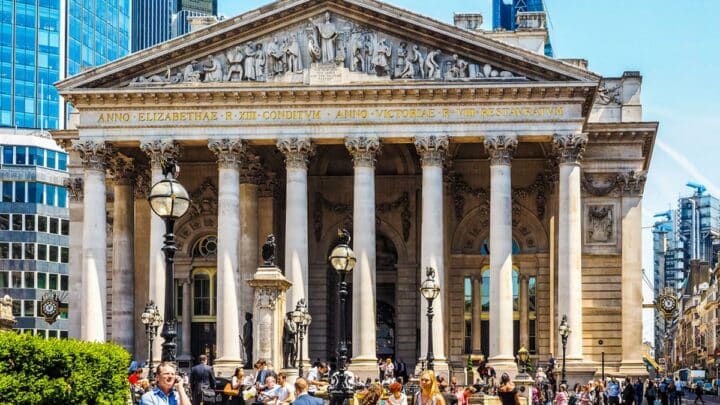
The history of The Royal Exchange – London’s first dedicated centre of commerce, and a beautiful spot for drink.
London is rich in history. It’s something we love to learn about, and to write about. Not many places in the capital pack in the history like The City of London. It’s the oldest part of town and as such has some fascinating stories to tell.
One such place is The Royal Exchange. The building is London’s earliest specialised commercial building and is somewhere you can still visit today – though in a very different capacity to the merchants that would have set up shop there nearly 500 years ago.
Let’s dive into the history of The Royal Exchange…
Why Visit The Royal Exchange?
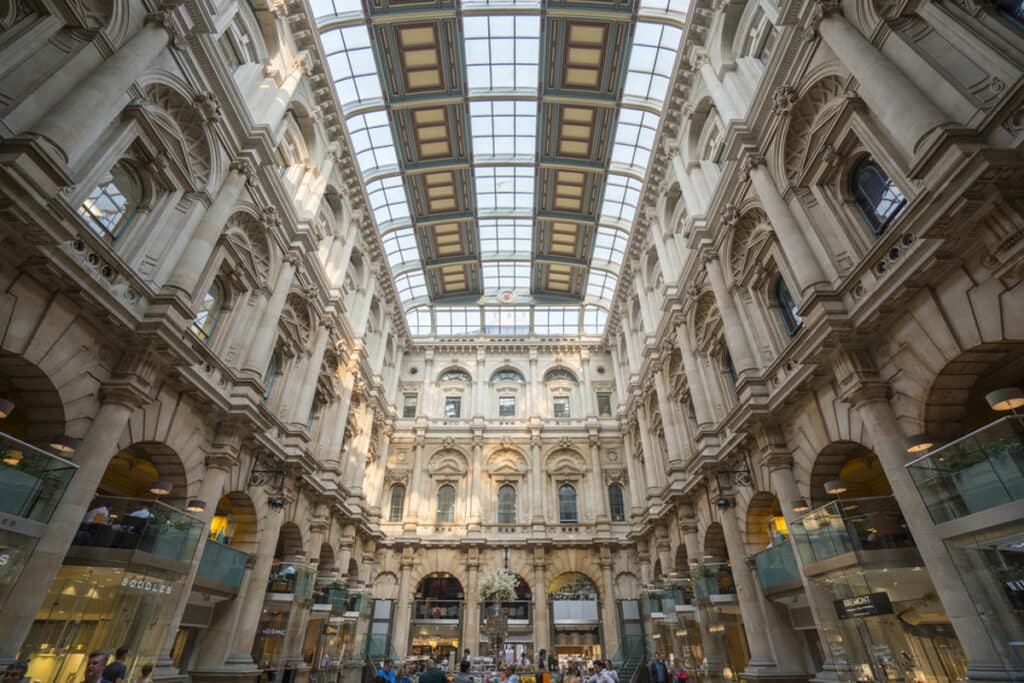
Perhaps for a nice glass of fizz at the Fortnum and Mason Bar – described by some as the most instagrammable bar in the world – but also to have a look at a building that’s shaped much of London’s commercial history.
Though much has changed over the years there are still many nods to the interesting past that surrounds this place.
The History of The Royal Exchange
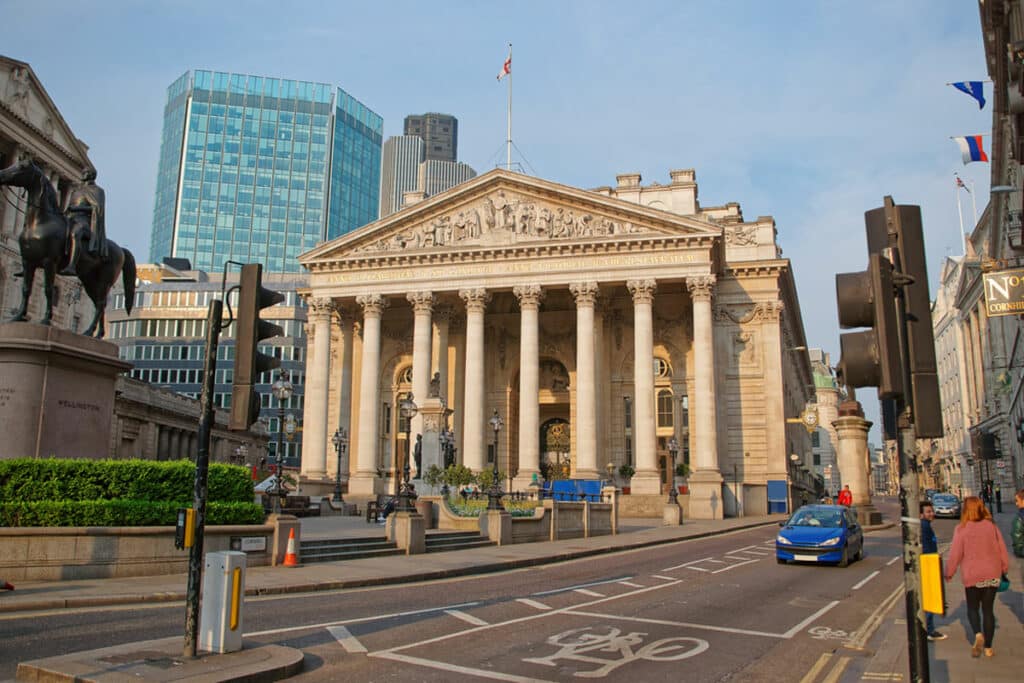
The Royal Exchange’s history begins in the middle ages, the 1500s to be precise. It’s a time of rising mercantilism. More and more, a globalising network of traders are buying goods and selling them on at a profit. It’s capitalism in its early form.
London at this time would have been a city of leaning wood buildings and stinking streets, crowds of people, clogged up roads. The new class of merchants selling their wares in the crowds and on the sides of the street. Wealthier merchants may have been able to afford a shop.
Then a fella called Sir Thomas Gresham steps on the scene…
The Founding of the Royal Exchange
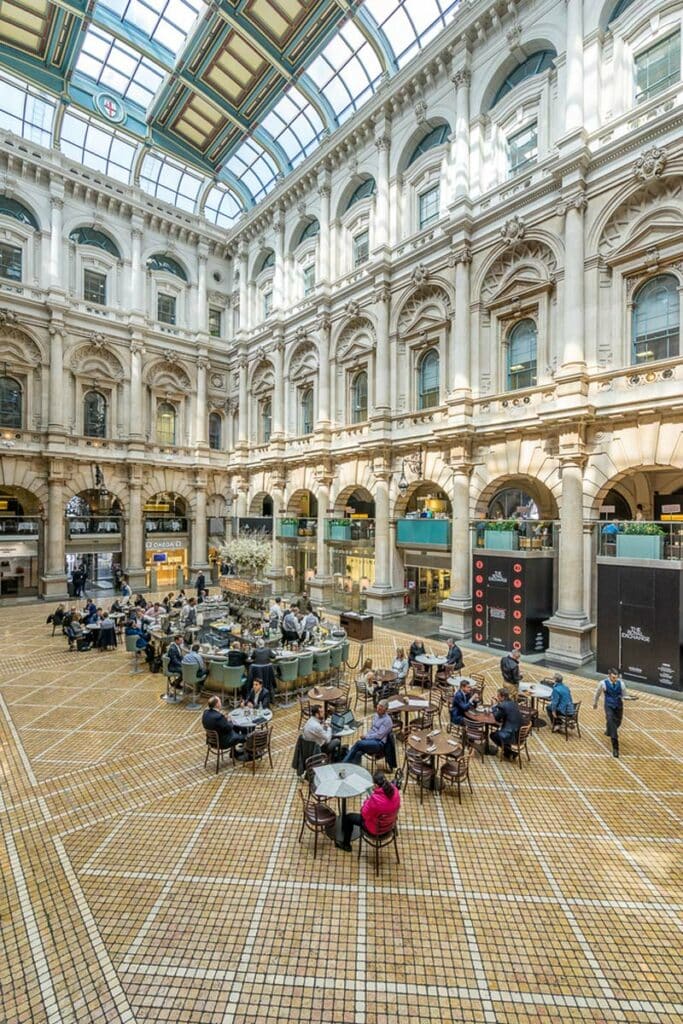
Sir Thomas Gresham was a merchant too, he’d made a good bit of money and thanks to some royal connections moved into the business of being the King’s investor. They say he picked up his investment skills in Antwerp – then a cosmopolitan hub of mercantilism to rival London.
Another Antwerp-based merchant friend of his, Richard Clough, had suggested they build a special centre of commerce in London – somewhere built purposely for the exchange of goods. The City of London was lobbied to give over some land, which they did, and the Court of Aldermen were employed to build it, which they did but at Gresham’s expense.
And thus, The Exchange, what could be described as London’s first shopping mall, was built. What about the ‘Royal’ part of its title? Well it was none other than Queen Elizabeth I who opened The Exchange, and she felt it was good enough to lend it her family’s title (as well as a licence to sell booze).
The Many Styles of The Royal Exchange
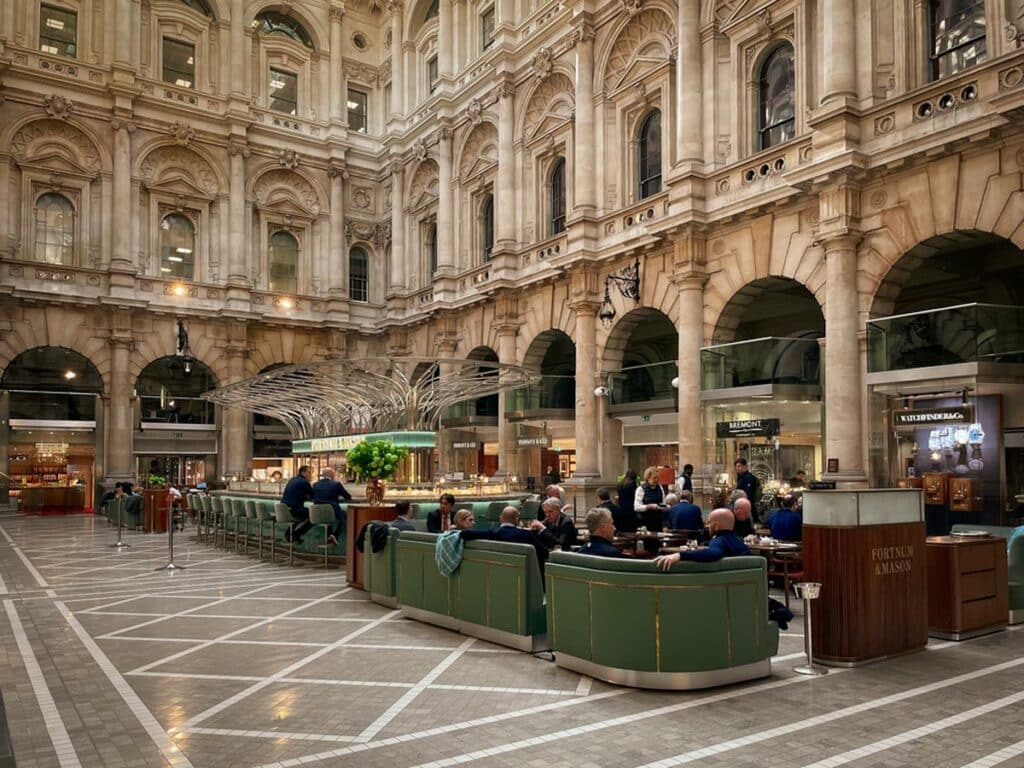
As you might have guessed from the Royal Exchange’s near 500-year-long history, the building you can see today is not the original structure of The Royal Exchange.
In Gresham’s era for example the building was modelled on Antwerp Bourse, a trading house that Gresham and Clough had clearly become familiar with in the Low Countries. They imported expensive stone, slate and glass from Europe for the construction. It would have looked quite impressive. Unfortunately, like most of London, it burnt down in the Great Fire.
The next iteration was completed in 1669. This one boasted a tall wooden tower that would eventually fall into disrepair. It would have been sometime during this phase of The Royal Exchange that the first stockbrokers would have been allowed in, previously having been banned because of their rude manners.
Ironically this structure also burnt down. The exchange you can see today was opened in 1844 by Queen Victoria. It’s in the neoclassical style and was one of the earliest buildings in London to make use of concrete (since the Romans of course).
What you Can See at The Royal Exchange Today
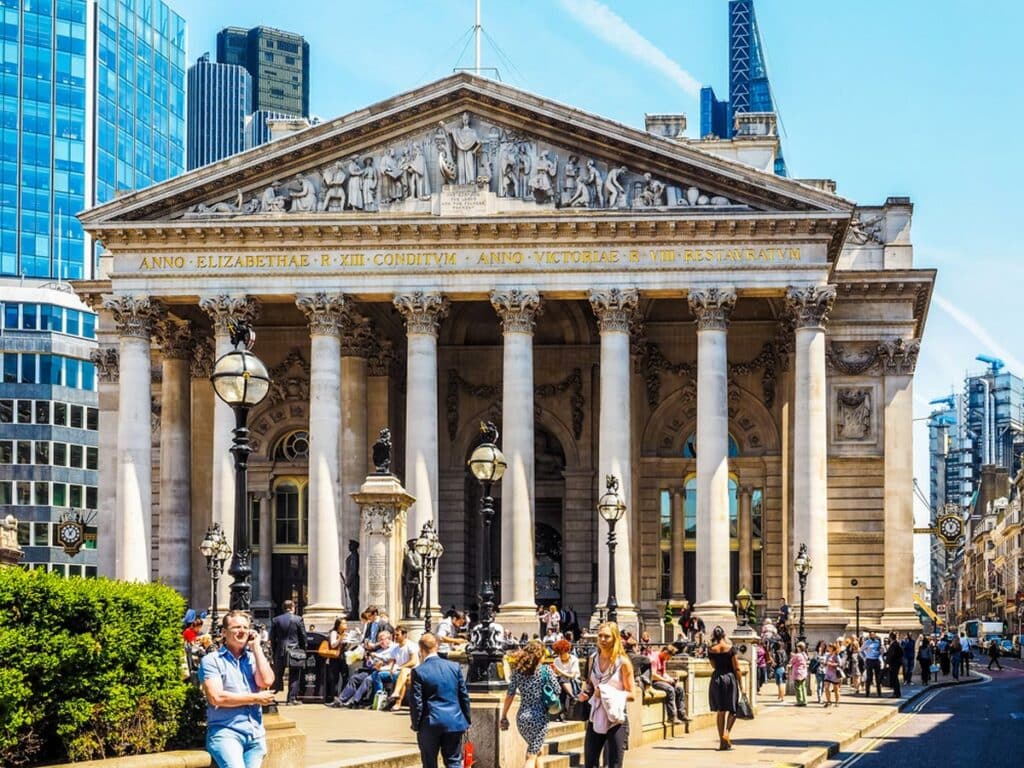
With trade no longer carried out by merchants and the rise of a capitalism we would recognise today, The Royal Exchange shut in 1939. These days it’s less full of shouting merchants and rude-mannered stockbrokers, and instead plays home to boutique shops and a Fortnum and Mason.
The thing that unites the three styles of The Royal Exchange is its central courtyard. It’s a feature that’s been present since its opening. The building also has several flourishes you should look out for if you visit. First of those is the weathervane. It’s in the shape of a grasshopper – the crest of the Gresham family.
You’ll also notice the pedimental sculpture on the building’s portico (the triangular bit at the front). These scream back to Ancient Athens’ Parthenon, the sculpture of which you can see in the British museum. On the exchange they depict merchants and foreign traders, with the central figure being an allegory for commerce.
There is also a war memorial and several statues. One is of Queen Elizabeth I, put there in honour of her opening of the original exchange. The other is Charles II. His statue is actually the only part that survived the burning of the second exchange building.
The Duke of Wellington makes the final statue, commemorated for his victory over Napoleon at Waterloo. His statue is cast of the metal of French cannons – totally badass and interestingly enough, not the only place French canon is used decoratively in London.
The Royal Exchange: Practical Information
Address: Royal Exchange, London EC3V 3LR
Opening Times: 7:30am – 10pm Monday – Friday, closed at the weekends.
Tickets: Free to enter.


